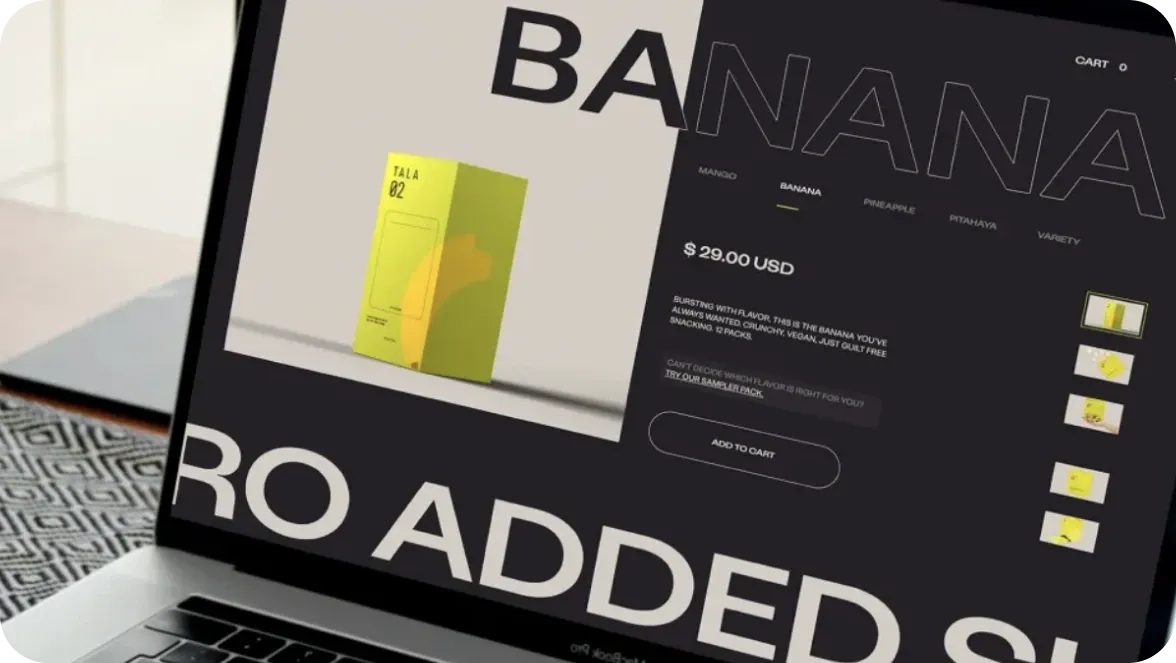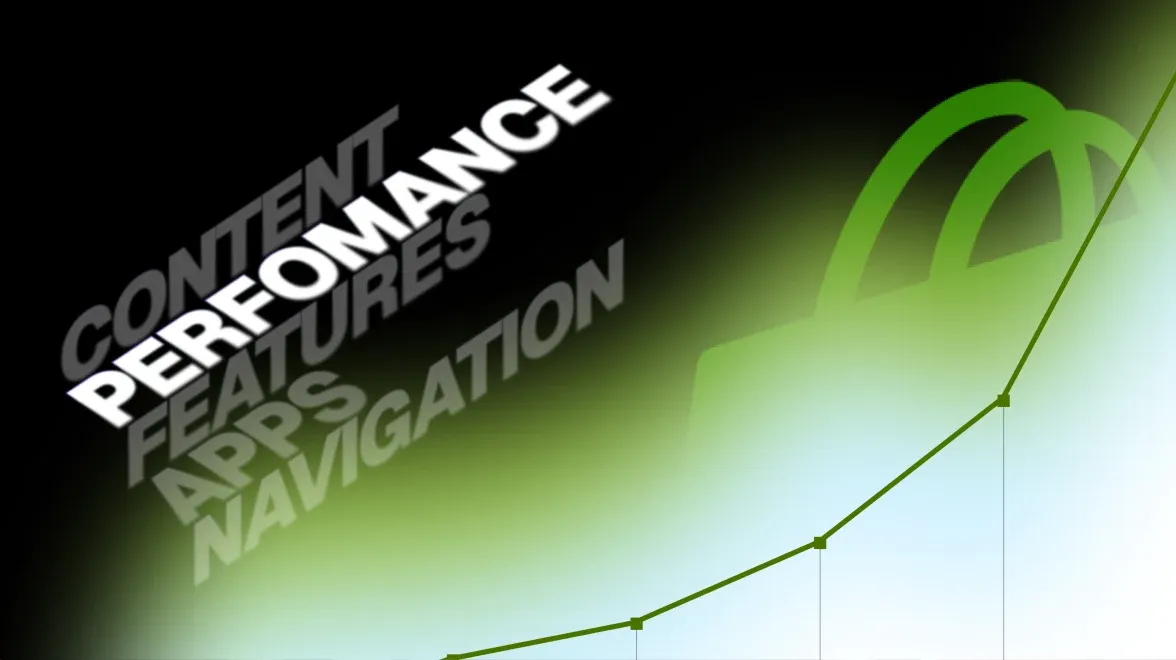
Running a Shopify store takes more than skill and passion to create and deliver products that resonate with your customer base. Once you've invested significant time and effort in driving traffic to your site and boosting conversion rates, you may ask yourself, “how to increase AOV in ecommerce?”
Average Order Value (AOV) is an often overlooked yet crucial metric. The good news is that you can substantially increase your AOV without a massive overhaul of your current setup. With higher AOV, you boost your business profitability with every transaction.
Increasing Average Order Value has a multifaceted impact on your business:
higher Customer Lifetime Value (CLV)
improved profit margins
optimized inventory management
enhanced customer loyalty
reduced marketing costs.
Keep reading to explore proven strategies to increase your store's AOV, from custom Shopify integrations to creative marketing tactics.
7 ways to increase AOV
How to increase the Average Order Value? Consider this: what if you encourage your existing customers to purchase just one more item per transaction? This minor trick can lead to a substantial increase in revenue without the added costs of customer acquisition. That’s the power of AOV — making the most out of each client.
#1 Implement product bundling
You can combine several related products and offer them at a discounted price to improve the Average Order Value on Shopify. This strategy encourages customers to buy more items per transaction by showing them the value of purchasing multiple products together.
To implement product bundling effectively, you can use Shopify apps like “Bundler – Product Bundles”. These apps allow you to create various types of bundles, such as fixed bundles (a pre-set group of items) or mix-and-match bundles (where customers can choose their preferred combination). You can display these bundles directly on individual product pages, cart pages, or even in a dedicated 'Bundle Deals' section.
With expert help, Shopify product bundling integrations are usually seamless and customizable. You can highlight the bundle’s value and savings, increasing the likelihood of a purchase. It not only increases AOV by pushing customers to buy more items but also helps in clearing out slow-moving inventory. For example, if you have a product that isn’t selling well, bundling it with a more popular item can move that inventory faster.
Additionally, you can theme bundles around seasonal promotions, making them even more appealing. Bundling also provides a better customer experience as it simplifies the customer's purchasing decision. It reduces analysis paralysis and increases the chances of conversion
#2 Use upselling and cross-selling apps
Upselling and cross-selling are key tactics to improve Average Order Value. They involve encouraging customers to purchase either a higher-end version of a product (upselling) or related items (cross-selling).
Shopify apps like “Bold Upsell” integrate directly into your product and checkout pages, providing dynamic suggestions based on the customer’s browsing and purchase history. For example, if a customer is considering a mid-range laptop, an upsell suggestion might promote a higher-spec model with more features. Cross-sell suggestions could include accessories like laptop bags or additional software, all of which add to the total cart value.
These strategies directly target increasing the value of individual transactions. Upselling and cross-selling not only enhance the customer's shopping experience by providing personalized recommendations but also capitalize on their existing purchase intent.
Using data-driven insights from these apps, you can continuously optimize your upselling and cross-selling strategies based on what works best for your audience. With their customization, you can increase customer satisfaction and loyalty.
Discover the top 10 Shopify upsell apps in our blog.
#3 Leverage dynamic pricing and discounts
How to increase Average Order Value on Shopify with dynamic pricing and volume discounts? Shopify apps like “Quantity Breaks & Discounts” allow you to set up tiered pricing rules that provide discounts based on the quantity purchased. For instance, you can offer a 5% discount for customers who buy 2-3 units of a product and a 10% discount for those who buy four or more.
It incentivizes customers to purchase in larger quantities to take advantage of the savings. The app automatically applies these discounts at checkout, making the process seamless for customers and encouraging them to buy more.
This strategy helps increase the average transaction size while improving inventory turnover. By encouraging customers to buy in bulk, you can reduce inventory holding costs and avoid stock obsolescence, especially for products with a limited shelf life.
Furthermore, volume discounts can attract wholesale buyers or business customers looking for cost-effective ways to purchase in large quantities. It’s a win-win situation where customers feel they’re getting a better deal, and you benefit from higher sales volumes and potentially lower per-unit costs. Implementing dynamic pricing also allows you to be more flexible with your pricing strategy, adapting it based on demand and seasonality.
#4 Integrate subscriptions
Subscription models secure long-term customer engagement and increase Average Order Value with recurring revenue. Shopify apps like “Smartrr Subscriptions” allow you to offer subscription options for your products. These apps provide flexible subscription plans, subscriber discounts, and the ability to modify subscriptions as needed.
For example, if you sell skincare products, you could offer a monthly subscription where customers receive their favorite products at a discounted rate compared to buying them individually. It increases AOV and provides a predictable revenue stream.
Subscriptions reduce dependency on one-time sales. Subscribers are more likely to remain engaged with your brand over the long term. It fosters customer loyalty and increases lifetime value. Moreover, data collected from subscription customers is valuable for personalized marketing and product development. You can analyze subscription data to identify popular products or customer preferences and use these insights to tailor your marketing campaigns.
#5 Optimize checkout with one-click upsells
One-click upsells increase AOV right at the checkout stage. Apps like “Zipify OneClickUpsell” integrate with Shopify to present relevant product suggestions after a customer has made a purchase, without them having to re-enter their payment details.
For instance, if a customer buys a pair of running shoes, they would see an offer for discounted running socks or a shoe cleaning kit. This method minimizes friction in the buying process, making it easy for customers to add additional items to their order with a single click.
One-click upsells can significantly boost your revenue by capitalizing on the customer’s buying momentum. The strategy increases AOV and improves the overall shopping experience by providing relevant, value-added suggestions.
The key to success with one-click upsells is personalization – using customer data to suggest products that complement their purchase. Moreover, this tactic also enhances customer satisfaction by offering products that they are likely to need or enjoy, thereby increasing the chances of repeat business.
#6 Set up a loyalty program with points and rewards
How to increase Average Order Value in ecommerce with a loyalty program? With this strategy, you can encourage customers to spend more by rewarding them for various actions, such as making a purchase, leaving a review, or referring a friend. Shopify apps like “Smile.io” allow you to create point-based loyalty programs where customers earn points and redeem them for discounts, exclusive products, or other perks.
For example, you can set up a system where customers earn 10 points for every dollar spent, and once they reach 500 points, they receive a $10 discount. This increases the AOV as customers are motivated to spend more to unlock rewards. A loyalty program fosters customer loyalty and repeat business, which is often more profitable than acquiring new customers.
Moreover, loyalty programs provide valuable data on customer purchasing behavior to segment your customer base and tailor marketing campaigns accordingly. You can reward customers for actions that benefit your business, such as referrals or social media engagement. This way, you will amplify your brand’s reach and attract new customers at a lower acquisition cost.
#7 Use free shipping thresholds
Setting a free shipping threshold is a straightforward strategy to increase AOV. Customers are more likely to add extra items to their cart if it means they can avoid paying for shipping. For instance, if your Average Order Value is $50 and you set the free shipping threshold at $75, customers may add an additional $25 worth of products to their cart to qualify for free shipping.
Shopify apps like “Free Shipping Bar” allow you to display a dynamic progress bar showing how much more needs to be spent to unlock free shipping. This visual reminder effectively nudges customers to spend more, optimizing the checkout experience.
Free shipping is one of the most sought-after perks by online shoppers, and offering it can reduce cart abandonment rates significantly. Moreover, the additional revenue generated from increased AOV can offset the cost of providing free shipping. Applying free shipping thresholds can be particularly effective during seasonal sales or promotional events, where customers are more inclined to make larger purchases.
By strategically setting and adjusting the free shipping threshold, you can balance increased sales with shipping costs, enhancing your store's profitability while improving the customer experience.
How to calculate AOV?
Calculating Average Order Value in ecommerce is essential for understanding your customers' purchasing behavior and making data-driven decisions for your Shopify store. AOV is calculated by dividing your store’s total revenue by the number of orders placed within a given timeframe. As a Shopify merchant, you can find this metric in your customer reports.
For instance, if your Shopify store made $10,000 from 200 orders in a month, your AOV would be $50. This metric helps you gauge how much, on average, a customer is spending per transaction, providing insights that can guide your marketing and sales strategies.
AOV Formula
The formula for calculating AOV is straightforward:
Let’s break it down with an example. If your Shopify store generated $36,000 in revenue from 900 orders, your AOV would be:
This means that, on average, each customer spent $40 per order. Understanding this metric can help you tailor your strategies to increase AOV, such as setting an effective free shipping threshold or optimizing your upselling and cross-selling tactics.
What is a good AOV for a Shopify store?
Determining what constitutes a "good" Average Order Value for a Shopify store varies significantly based on the type of products sold, the target audience, and the business model. Exploring Shopify Average Order Value benchmarks for comparison can help you assess whether your AOV is performing well.
In general, an AOV between $50 and $100 is considered good for Shopify stores selling mid-range products. For luxury or high-end goods, this value might be much higher, often exceeding $200 or more.
Most Shopify stores aim to keep the AOV aligned with the business’s profit margins and customer acquisition costs. A higher AOV allows you to absorb these costs more effectively, contributing to a more profitable business model. An AOV that covers or exceeds your cost per acquisition (CPA) is a solid starting point. From there, you can employ strategies to push the AOV higher, like upselling, cross-selling, or offering discounts for bulk purchases.
Factors influencing AOV
Several factors can influence what defines a "good" AOV for your Shopify store:
- Product type and price point: Stores selling low-cost, high-volume products like apparel or accessories typically have a lower AOV compared to those selling high-ticket items like electronics or furniture. Your AOV should align with your product pricing strategy and profit margins.
- Target audience: Understanding your target market is crucial. For example, a store targeting budget-conscious consumers may have a lower AOV compared to one targeting luxury buyers. Tailoring your upselling and cross-selling strategies to your audience can help maximize AOV.
- Sales and marketing strategy: Stores that frequently use discounts, free shipping, and other incentives may have a higher AOV as customers are encouraged to add more items to their cart to qualify for these offers.
Using Shopify benchmarks for AOV insights
If you are a Shopify Plus user, you have access to the Shopify Benchmarks tool to compare your store's AOV against similar brands on the platform. This tool provides a valuable reference point by aggregating data from stores of comparable size, industry, and sales volume.
With Shopify Benchmarks, you can easily see if your store's AOV is below, on par with, or above the average for your industry. This contextual data helps you set realistic AOV goals and develop targeted strategies to improve your store’s performance.
For those not on Shopify Plus, there are other ways to gauge a good AOV. Research industry standards for your specific niche and analyze competitors. Tools like Google Analytics and third-party apps like Lucky Orange can provide additional insights into customer behavior, helping you identify opportunities to increase AOV.
Pro tip: By regularly comparing your AOV against these benchmarks, you can keep track of your store's growth and make data-driven decisions to enhance your profitability.
To wrap up
To effectively increase your Shopify store's Average Order Value, it's essential to implement targeted strategies. They not only boost sales but also enhance customer experience. Here are some effective approaches:
product bundling
upselling and cross-selling
free shipping thresholds
loyalty programs
one-click upsells.
At DigitalSuits, we specialize in Shopify development solutions that can help you implement these strategies seamlessly. Our experienced team will work with you to create a visually appealing and user-friendly online store, optimize the checkout process, and develop effective marketing strategies tailored to your business goals.
Contact us to accelerate your AOV and maximize your Shopify store’s potential.
Frequently asked questions
How can I effectively track changes in my AOV?
You can track your AOV by analyzing your sales data in Shopify's analytics dashboard. Look for trends over time and segment your data by different parameters (e.g., time periods, customer demographics) to identify best strategies.
Are there specific types of products that work best for bundling?
Yes, products that complement each other or are frequently bought together typically work best for bundling. For example, if you sell cosmetics, bundling a foundation with a concealer can encourage customers to purchase both. Testing different combinations can also help determine what resonates with your audience.
How can I create a loyalty program that effectively increases AOV?
To create an effective loyalty program, consider offering points for every dollar spent, which can be redeemed for discounts on future purchases. Additionally, provide bonus points for higher spending thresholds or for referring new customers. The key is to make the rewards appealing enough to encourage larger purchases.
What role does website design play in increasing AOV?
Website design plays a significant role in user experience, directly affecting AOV. A well-designed store that is easy to navigate encourages customers to explore more products. Incorporating clear calls-to-action, attractive product displays, and a streamlined checkout process can help guide customers toward adding more items to their carts.









































Was this helpful?
0
No comments yet